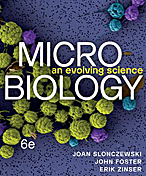Pendulisporaceae: Difference between revisions
| Line 54: | Line 54: | ||
==References== | ==References== | ||
NCBI:txid3375061. | |||
==Author== | ==Author== | ||
Revision as of 17:24, 2 December 2024
Classification
Domain; Phylum; Class; Order; family [Others may be used. Use NCBI link to find]
Species
|
NCBI: [1] |
Genus species
Description and Significance
Describe the appearance, habitat, etc. of the organism, and why you think it is important.
Genome Structure
Taxonomy ID: 3375061. Our organism Pendulisporaceae is part of the mycobacterial family. The genome is very small as there are only seven families within the Myxococcota phylum. All of the families within this phylum are natural producers of pharmaceutical products. The whole genome has a very distinct sporulation behavior and the inner cells within the fruiting bodies differentiate directly into spherical spores. Their genome sequences revealed large genomes rich in biosynthetic gene clusters. Pendulisporaceae is identified under the Sorangiineae suborder. They have excellent defense against Staphylococcus Aureus. They have a swarm colony with flare-like edges, slender rod-shaped vegetative cells, and dormant spores. They have single circular chromosomes, 12.2 to 13.6 mega base pairs long.
Cell Structure, Metabolism and Life Cycle
Interesting features of cell structure; how it gains energy; what important molecules it produces.
Ecology and Pathogenesis
Habitat; symbiosis; biogeochemical significance; contributions to environment.
If relevant, how does this organism cause disease? Human, animal, plant hosts? Virulence factors, as well as patient symptoms.
References
NCBI:txid3375061.
Author
Page authored by Haley Evans, Sadie Ostergard, Sam Cabrera, & Abbey Guernsey, students of Prof. Bradley Tolar at UNC Wilmington.

